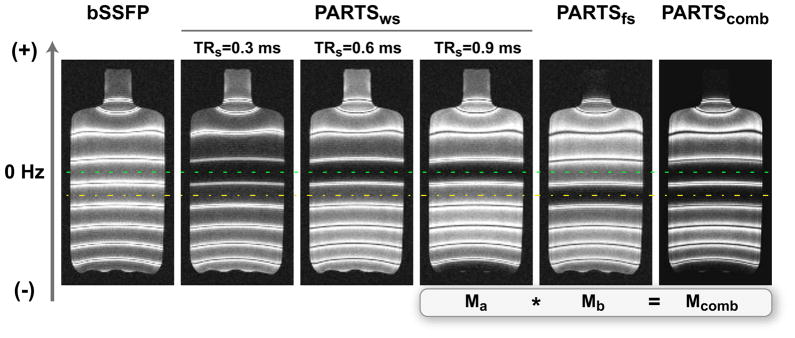Figure 6.
A water bottle (T1/T2 = 250/50 ms) was imaged with a linear field gradient in the vertical direction to generate spatially varying precession frequency. Water-suppressed (ws) bSSFP and PARTS data were collected with these parameters: α = 5°, TR = 4.8 ms for bSSFP, and TRs/TRl = 0.3/4.5, 0.6/4.2, and 0.9/3.9 ms for PARTSws. PARTSws achieves a significantly higher level of suppression over the central on-resonant band (marked with the dashed line). The level of suppression is further improved for shorter TRs at the expense of reducing the width of the off-resonant peaks. The PARTS stop-band was shifted to the fat resonance (marked with the dash-dot line) to collect fat-suppressed (fs) data for TRs/TRl = 0.9/3.9 ms. PARTSws can be simply multiplied with PARTSfs to suppress both background signals simultaneously.

